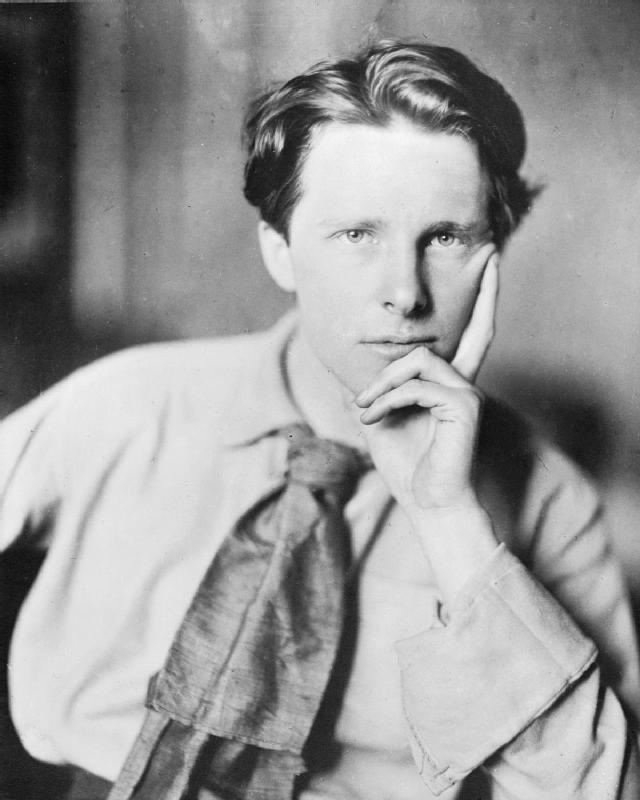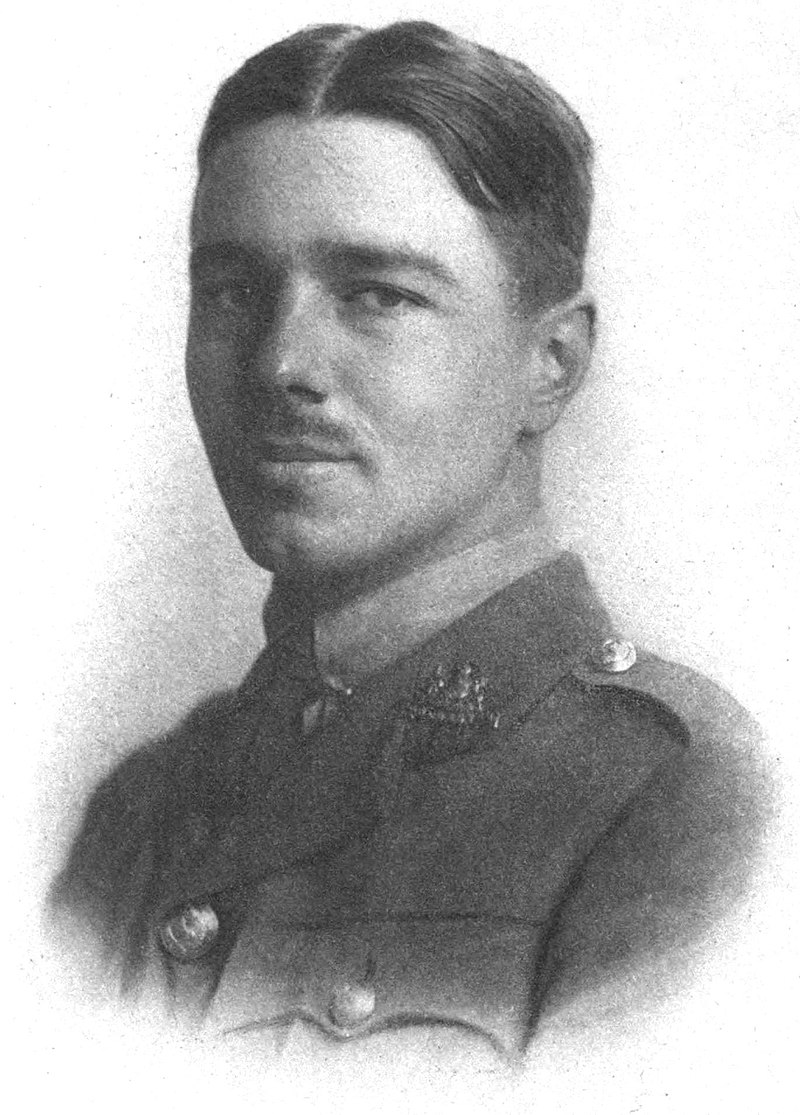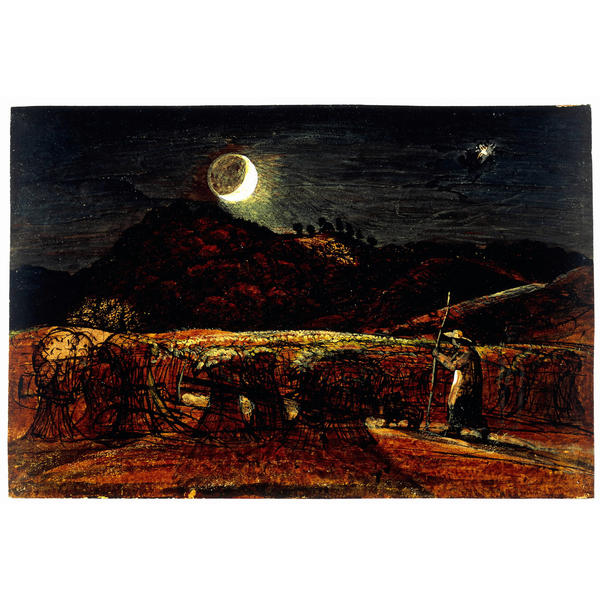Some years ago, I was actually employed to deliver an access course in English Literature 😍 Quite frankly, I could not believe I was being paid to talk with students about poetry 😍😍 I do love the teaching I do now, but that does remain my favourite teaching I ever did 😍😍😍
My daughter is heading for her GCSE English exam, so I'm drafting up a post for her and her fellow pupils based on one of the exercises we used to do in my classes. In this exercise, we looked at two First World War poems: one by Rupert Brooke, the other by Wilfred Owen. Here in this post, I'll consider a number of aspects of the poems. In setting them side by side: "compare (find similarities between them) and contrast (find differences between them)", I'm able to bring out more elements about them than I could do if I just set out to talk about them individually. It's common for literature exams to ask students to do this, because it helps them to think about literature like this, rather than be asked to think about one poem in isolation.
As well as looking at each of the poems, I consider some historical and biographical background which is pertinent to the poems. I pick out details which tell us something about the poems, and also about the time and circumstances in which they were written. I'm trying to bring out how different our attitude is today to the way the poems were viewed at the time of their writing. I want to develop an appreciation of both poems, although if I prefer one I shall say so and explain why.
NB I'm writing out what I do here explicitly. However it's better to do what in creative writing is called 'show, don't tell'. Rather than use words up saying: "Now I'm going to look at historical context", it's better to just do so (clearly, so the examiner can see you are doing it). In an exam answer, I would say less about what I'm doing here and talk more specifically about details of the poems - with more examples.
 (By British Government - This is photograph Q 71073 from the collections of the Imperial War Museums., Public Domain, https://commons.wikimedia.org/w/index.php?curid=3691918)
(By British Government - This is photograph Q 71073 from the collections of the Imperial War Museums., Public Domain, https://commons.wikimedia.org/w/index.php?curid=3691918)
Rupert Brooke was a well-connected and well-educated young man, described by the Irish poet W.B. Yeats as "the handsomest young man in England". He attended Rugby School (where his father was a teacher) and King's College, Cambridge. He wrote a famous poem about The Old Vicarage, Grantchester; the lines 'Stands the church clock at ten to three? and is there honey still for tea?" being much quoted by hungry undergraduates.
 (Photo from frontispiece of Owen's collection of poerms https://commons.wikimedia.org/w/index.php?curid=11769951)
(Photo from frontispiece of Owen's collection of poerms https://commons.wikimedia.org/w/index.php?curid=11769951)
Wilfred Owen's father was a stationmaster, and he was educated mainly at Shrewsbury Technical School. He worked to support himself in studying English Literature.
Both enlisted to serve in the First World War, both were officers, both died in the war. Brooke died relatively early, in 1915, of a blood infection just off the Greek Island of Skyros. Owen was killed just a week before the armistice, in 1918, in France.
Rupert Brooke's poem The Soldier was widely celebrated as soon as it was published - by the Times Literary Supplement in March 1915, a year after the outbreak of war. The poem begins: "If I should die, think only this of me ..." It was read out in St Paul's Cathedral on Easter Sunday: 4th April, ironically just days before Brooke's death.
There is some evidence that at the time of his death, Brooke was starting to write a different, more realist kind of poem about the war of which he had then had some actual experience.
Wilfred Owen's poetry is a powerful indictment of the brutality of war, bringing us graphic images from the battle front "Bent double, like old beggars under sacks, / Knock-kneed, coughing like hags, we cursed through sludge," (Dulce et Decorum Est).
Have a read of the two poems now, if you haven't already done so.
When I used these poems as a comparative exercise, I used to ask my students which poem is 'best'. They would all answer immediately that Owen's was the 'best' poem; they disapproved of the romantic view of warfare and death conveyed in Brooke's The Soldier. We come to the poem after two world wars and with understanding of other wartime atrocities, such as in the Vietnam War, whereas those who heard Brooke's poem read out in St Paul's Cathedral in 1915 had no idea what conditions were like on the battle front. The last 100 years have given us access to increasingly more media to show us what warfare is like: images like Nick Ut's famous photo after a napalm attack, or films like Apocalypse Now and The Deerhunter made evident the costs of war to huge global audiences. In the First World War, it was still relatively easy for government to control what information the public had about war.
It was partly to address this misinformation that poets like Wilfred Owen and Siegfried Sassoon (a major influence on Owen's thinking) began to write work that gave a different picture of warfare.
Although Owen's poem gives a better understanding of what war is like, does that make it a better poem? I used to ask my students to consider the literary aspects of the work. Brooke's takes us as reader smoothly through, using delicate imagery to convey a connection between the person, Nature and the specific countryside of England. Brooke suggests that although he will turn to dust, there will be a richness about that earth which comes from his life experience and connection to his home countryside: "Washed by the rivers, blest by suns of home." Sentences and phrases are clear and usually close at the end of the line of poetry. Brooke has used the English sonnet form (as opposed to the Petrachan, which has a different rhyme scheme), although his sestet (the six lines at the end) adapts the rhyme scheme as classically used by Shakespeare, and makes it gentler. Shakespeare's use of a final rhyming couplet gives his sonnets an assertive conclusion, whereas Brooke's rhyme scheme eases us along to the end.
Wilfred Owen's poem starts off looking like a sonnet. Then another eight lines get attached at the end. It's as if there is too much to be contained in the poetic form, his angry emotions spill over after he has described the effect of the gas attack, into an indictment of people back home who urge young men to go and fight in the kind of patriotic mood that marks out Brooke's poem. The poem starts with neat sentences fitting into the lines, but soon these too start spilling over into the next line: lurching like the exhausted men in the poem. The rhyme scheme of Owen's sonnet is like that of Brooke's, but he splits off the last two lines of his sestet as if they are a final conclusion as in Shakespeare's sonnets, and he repeats the word 'drowning' instead of finding another word which rhymes with it - giving extra emphasis to it.
This particular poem of Owen's shows that he understood the power of the Classics: the Latin and Greek texts which upper class society would know very well. At the end he quotes the Horace line which many would have been mouthing at this time: It is sweet and proper to die for the nation. Yet Owen had chosen to study English Literature. (Brooke studied the Classics.) The two poets were living at a time of profound change. The World Wars did not cause the social changes which followed them: social class divisions becoming less obvious with increased celebration of working class cultures, women going into paid work; however they accelerated them. Brooke seems like the last spokesman for Romantic literature. British poets afterwards have a twist of cynicism in their writing, it seems as if they can no longer unselfconsciously write of the beauties of life and Nature. There is no hint of Romanticism, though, in Owen's dark imagery. Nature is only there in metaphor: the man dying of gas poisoning is seen through Owen's gas mask 'as under a green sea'.
 (A Cornfield by Moonlight with the Evening Star, by Samuel Palmer - image available copyright free from Wikipedia. https://en.wikipedia.org/wiki/File:Palmer._A_Cornfield_by_Moonlight_with_the_Evening_Star._Watercolour_with_bodycolour_and_pen_and_ink_c.1830..jpg.)
(A Cornfield by Moonlight with the Evening Star, by Samuel Palmer - image available copyright free from Wikipedia. https://en.wikipedia.org/wiki/File:Palmer._A_Cornfield_by_Moonlight_with_the_Evening_Star._Watercolour_with_bodycolour_and_pen_and_ink_c.1830..jpg.)
The Romantic movement with its celebration of Nature and high emotion has produced some beautiful works of art. For me, Brooke's poem The Soldier belongs with those. The imagery, the tender humanist philosophy which suggests an intimate connection between the individual person and our natural surroundings, these are themes which the Romantic movement celebrated through its art. In spite of our radical change of opinion about warfare, Brooke's poem has survived to be enjoyed for eternal themes which we go back and back to: What is death? What meaning do our lives have after death? Are we humans not part of Nature, must we be 'social'?
Yet, that does not mean that Owen's poem is 'worse' than Brooke's. I did a little trick on my students by forcing them to see that although they might not sympathise with the philosophy of Brooke's The Soldier in its wartime context, it is a magnificent poem in technical terms: so coherent, the imagery fitting together like the parts of a body, the lines flowing so easily one into the next.
Owen's poem is fitful and spilling out of any formal arrangement: a sonnet with an extra octet. The images he conjures are harsh and stark. Yet that too is a great literary achievement, to make us feel as if we are staggering drunkenly from one line to the next like exhausted soldiers; to shock us with the repetition of the word 'drowning', then to drag us through another eight weary lines detailing the agonising death of a man whom we see turning horribly slowly from a suffering fellow human into the corner of a foreign field.
Both are great poems. They stand at a point when society underwent profound change, very suddenly. A culture of high art, of the Classics and Romantic celebration of Nature was abruptly forced to confront brutal Realist understanding of the conditions of life for many ordinary people. It would take many years for us to grasp what that could mean, and perhaps we are still struggling with these twin perspectives on our lives. Perhaps we still want to celebrate that special connection with the Natural world which we do have, while confronted continuously with images of what human impact on Nature is really like.


(Image from interview with Blue Planet producer.
Image from Australian conservation site.)